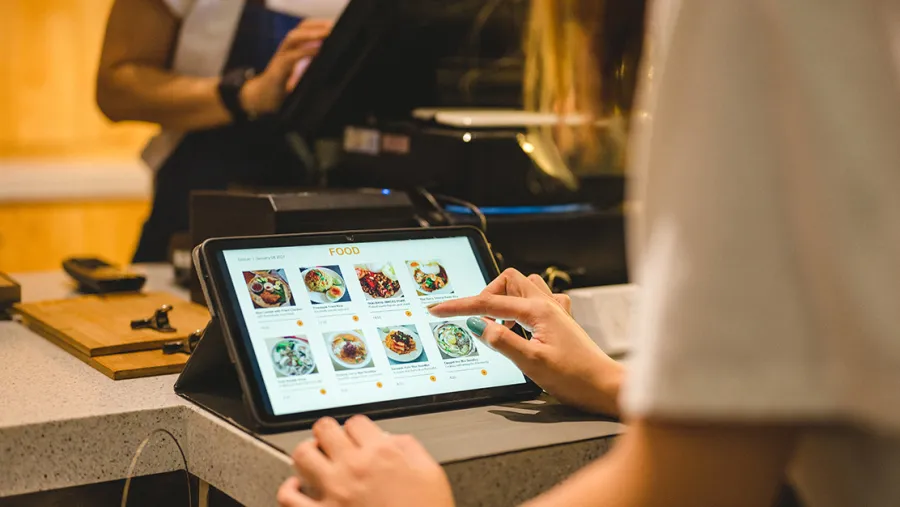
Brand Loyalty in 2023: Is It Still Alive?
78% of consumers may seem loyal to a brand but will immediately switch to a cheaper option.
Brand loyalty is a concept that's been around since the dawn of advertising. Marketers have been trying to develop loyal customers for decades, and with good reason--it leads to higher profits, more sales and higher customer retention rates. However, in today's world where self-expression is so important and brands are competing for attention more than ever before, how can QSRs implement an effective loyalty program?
Cheetah Digital, a loyalty marketing solutions company, has identified ways QSRs can build loyalty programs in an increasingly competitive environment.
Why Consumers Stick With A Brand
The relationship between customer and brand has changed dramatically over recent years. In a recent consumer trend report by Cheetah Digital, 55% of consumers are loyal to brands with great products and services, and 39% are loyal because they feel safe to buy from, but only 34% attribute their loyalty to the brand's loyalty program.
Consumers are becoming more discerning about the brands they choose to spend money on. They expect companies to not just offer superior products or services, but also be trustworthy when it comes to customer loyalty programs.
Building Consumer Loyalty
Despite loyalty being an important factor in the customer experience, over two-thirds of consumers say they frequently buy from one company but don’t feel loyal to it. Furthermore, 78% of people say that while they may identify with a particular brand, they're happy to shop around if something cheaper or more convenient comes along.
With these, how can companies encourage regular customers to become loyal advocates? According to Cheetah Digital, brands that provide extra value for the customer to stay loyal (40%), feeling safe to buy from (24%), understanding the customer as an individual (23%), and treating data with respect (17%), were the key drivers.
This means that customers want to feel valued by brands – that they matter enough for brands to invest time into building a relationship with them rather than simply treating them as just another person walking through the door (or swiping past on mobile).
Implementing A Loyalty Program
Even if a brand is not offering a loyalty program, 40% of consumers report being more likely to take part in one. Customers are also expecting more from a loyalty program—a reward that genuinely recognises and acknowledges them as an individual rather than just another card on the table, including contests and sweepstakes (73%), exclusive access to content (58%), personalised product recommendations (56%) as well as brand recognition (45%) and community (33%).
These reflect that consumers are wanting more for their dollar in the current financial climate and the expectation of receiving personalised experiences from brands they have engaged with in the past.
A brand that has tied these strategies together well is Bakers Delight. When they launched their Dough Getters program, they ran a month-long acquisition campaign using sweepstakes. Every week, all new members and purchasers were given the chance to win a year's worth of bread—as well as minor prizes such as $2 or $3 coupons. The campaign drove acquisition, strengthened brand recognition, and gained valuable first-party data points on their new members. This will help Bakers Delight build personalisation into their program.
Best Practices For QSR Loyalty Programs
Brendan Murphy, Director of Solutions Consulting APAC, Cheetah Digital, shares "With the growing pressures on household budgets due to recent interest rate rises and a looming recession, restaurant businesses have an amazing opportunity to build brand loyalty with their guests and an emotional connection by helping them where it matters most, in the wallet."
Here are some best practices when implementing loyalty programs in the QSR industry:
Executive Sponsorship: Successful loyalty programs impact every aspect of a restaurant’s operations. Achieving the support of management is critical to making sure all departments understand how much the business values customers.
Clearly defined program design, value exchange, and marketing tactics: When businesses have done their research on their audience and clearly defined the goals of a loyalty program, they will find it easier to attract help from vendors and partners.
Staff Training and Enablement: In order for the loyalty program to succeed, all of the employees need to understand and be able to sell its benefits. Staff buy-in is essential to communicating a loyalty program effectively to customers.
Modern loyalty management technology: QSRs have a lot of choices in technology these days, but they often try to use the POS system they already own rather than purchase something that is better suited for their needs. More often than not, these features aren't a core function of the POS, aren't designed to support guest loyalty programs, and lack integration with mobile channels like apps and wallets.
Key Takeaway
Brand loyalty is not dead. The loyal consumer is still with us, but they need to be treated differently than they had in the past. The new era of consumers wants a personalised experience from their favourite brands, and this can only come from an understanding of their needs and desires. In order for brands to succeed in this new environment, they will need to focus on creating better experiences for their customers across all channels and platforms through technology solutions, making sure that every interaction feels special no matter where it takes place






















